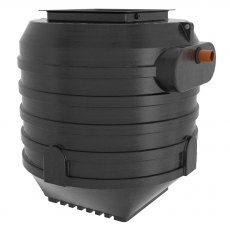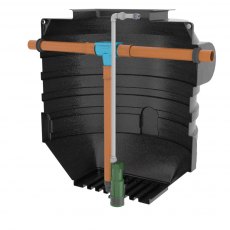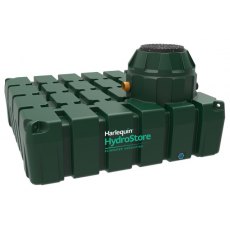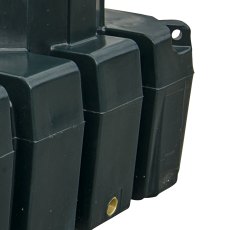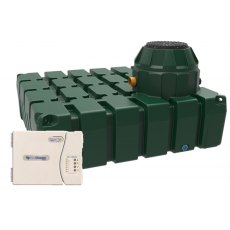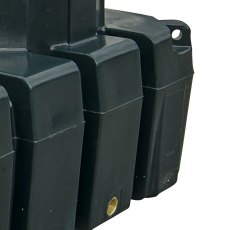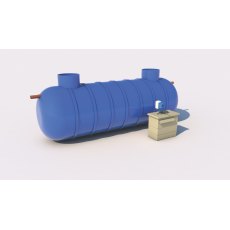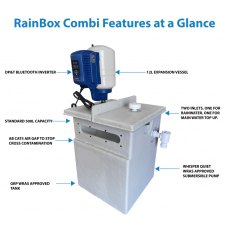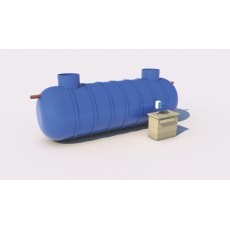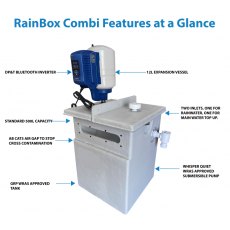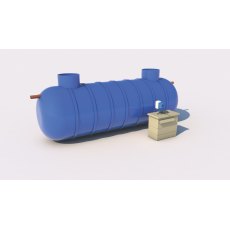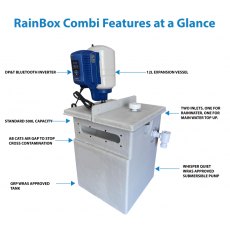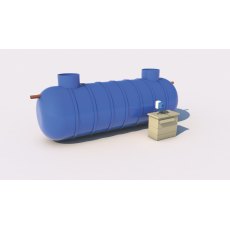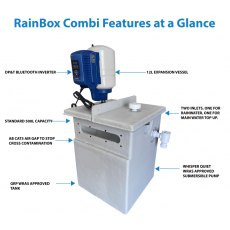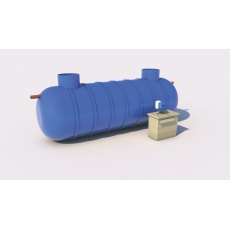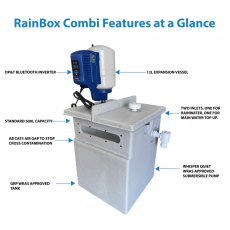Rainwater Harvesting FAQs
What are the benefits of having a water butt?
A water butt, also known as a rain barrel, is a container used to collect and store rainwater that falls on rooftops. There are several benefits to having a water butt. Collecting rainwater in a water butt allows you to reuse it for various purposes, such as watering your plants, washing your car, or cleaning outdoor spaces. This reduces your reliance on tap water, which is often treated and requires energy for purification and distribution. Using rainwater from a water butt can help conserve water and reduce your overall water usage, leading to cost savings on your water bill.
Rainwater is naturally soft and free from the chemicals commonly found in tap water, such as chlorine and fluorine. Using rainwater collected in a water butt for watering your plants provides them with natural, untreated water, which can be healthier for their growth and development.
During periods of water scarcity or drought, having a water butt can provide you with a stored source of water for essential outdoor tasks, such as watering your garden or washing your car, even when water restrictions may be in place. This can help you maintain your outdoor spaces and reduce your impact on local water resources during times of water shortage.
How does a water butt work?
A water butt is typically positioned under a downpipe or gutter on your roof. When it rains, water from the roof flows into the gutter and down the downpipe, and then into the water butt through a diverter or downpipe connector. Some water butts may also have a built-in filter to prevent debris, such as leaves and twigs, from entering the water butt and contaminating the stored water.
Once the rainwater enters the water butt, it is stored in the container until you are ready to use it. At Tanks Direct, we offer a range of water butts in various sizes, from 110 to 340 litres. Water butts are typically equipped with a tap or a hose attachment near the bottom of the container, allowing you to access the collected water easily. Some water butts may also have an overflow outlet near the top to prevent overflow during heavy rainfall.
You can use the stored rainwater in your water butt for various purposes, such as watering your plants, washing your car, or cleaning outdoor spaces. Depending on the design of your water butt, you can either use a tap to fill watering cans or connect a hose to the hose attachment to distribute the water directly to your garden or other areas.
How long can you keep water in a water butt?
The length of time you can keep water in a water butt depends on various factors, such as the size and material of the water butt and the quality of the collected rainwater. In general, rainwater stored in a properly maintained water butt can be kept for several weeks to several months. However, it's important to note that rainwater is not treated or purified, and over time, it may become stagnant or develop algae, which can affect its quality.
The quality of the rainwater collected in a water butt can vary depending on factors such as air pollution, debris, and contaminants from the roof or gutters. It's recommended to use a water butt with a built-in filter or add a filter attachment to the downpipe to help minimise debris and contaminants from entering the water butt. Regularly checking and cleaning the water butt, including the filter, can help maintain water quality.
If you use the stored rainwater in your water butt regularly for watering plants or other purposes, the water turnover will be higher, and the water is less likely to stagnate. Using the collected rainwater regularly can help ensure that the water remains fresh and reduces the risk of water quality issues.
Regular maintenance of the water butt is important to ensure the water remains clean and fresh. This includes checking the water butt for debris or sediment build-up, cleaning the container and filter as needed, and ensuring that the tap or hose attachment is in good working condition. Following the manufacturer's instructions for maintenance and cleaning is recommended.
It's generally recommended to use up the stored rainwater in a water butt within a few weeks to a few months to ensure optimal water quality. If you have concerns about water quality or if the water in your water butt appears discoloured, has an odour, or shows signs of contamination, it's best to discard the water and clean the water butt thoroughly before collecting new rainwater.
Can you drink rainwater from a water butt?
While rainwater is generally considered safe for many uses, including watering plants and cleaning outdoor spaces, it's not recommended to drink rainwater from a water butt without proper treatment. Rainwater collected in a water butt is not typically treated or purified and may contain various contaminants that can pose health risks if ingested.
Rainwater can pick up contaminants from the roof, gutters, and other surfaces as it flows into the water butt, including dust, pollen, bird droppings, leaves, and other debris. In addition, air pollution and environmental contaminants can also be present in rainwater, especially in urban areas. These contaminants can potentially affect the quality of the collected rainwater and make it unsafe for drinking without proper treatment.
How to install a water butt?
Installing a water butt involves several steps to ensure proper setup and functionality.
- Select a location for your water butt that is close to a downpipe or a rainwater source, such as a roof or gutter. The area should be level and stable to support the weight of the water butt when full. Consider accessibility for maintenance and ease of use, such as attaching a hose or filling watering cans.
- Clear the area of any debris, vegetation, or obstacles that may interfere with the installation or use of the water butt. Ensure that the ground is level and stable.
- Install a rainwater diverter to divert water from a downpipe into the water butt. Follow the manufacturer's instructions to install the diverter, which typically involves cutting a section of the downpipe and attaching the diverter using screws or clips. Make sure the diverter is securely fitted and positioned properly to direct water into the water butt.
- Place the water butt in the chosen location and ensure that it is level and stable. If the water butt has a stand or pedestal, assemble it according to the manufacturer's instructions. Some water butts may also require additional brackets or supports for stability.
- Connect the hose or pipe from the rainwater diverter to the inlet of the water butt. Make sure the connection is tight and secure to prevent leaks.
- If the water butt has an overflow port, it's important to install an overflow pipe or hose to direct excess water away from the water butt and prevent overflow. Follow the manufacturer's instructions to attach the overflow pipe or hose securely and direct it to a suitable drainage area.
- Install a tap or hose attachment at the base of the water butt to allow for easy access to the stored rainwater. Follow the manufacturer's instructions to install the tap or hose attachment securely and ensure that it is positioned properly for convenient use.
- Once the water butt is installed, fill it with water to check for any leaks or drips. Fix any leaks or issues before using the water butt.
You will need to ensure your water butt is properly maintained by regularly checking for debris, cleaning filters or screens, and ensuring that the tap or hose attachment is in good working condition. Follow the manufacturer's instructions for maintenance and cleaning to ensure optimal performance.
What is Rainwater Harvesting?
Rainwater harvesting is the collection and storage of rainwater, instead of letting it be dispersed into the ground. There are various rainwater harvesting methods available but generally rainwater is collected from roof-like surfaces and redirected to a rainwater harvesting tank, either above the ground or below.
Rainwater harvesting has traditionally been used for watering the garden but, thanks to new technology, a rainwater harvesting system can be plumbed into your home’s existing pipework so that you can harvest rainwater to flush your toilets, wash your clothes and many other non-human consumption related applications. According to the Rainwater Harvesting Association, you could reduce your water consumption by as much as 40% which will lower your water bills if you’re on a water meter.

